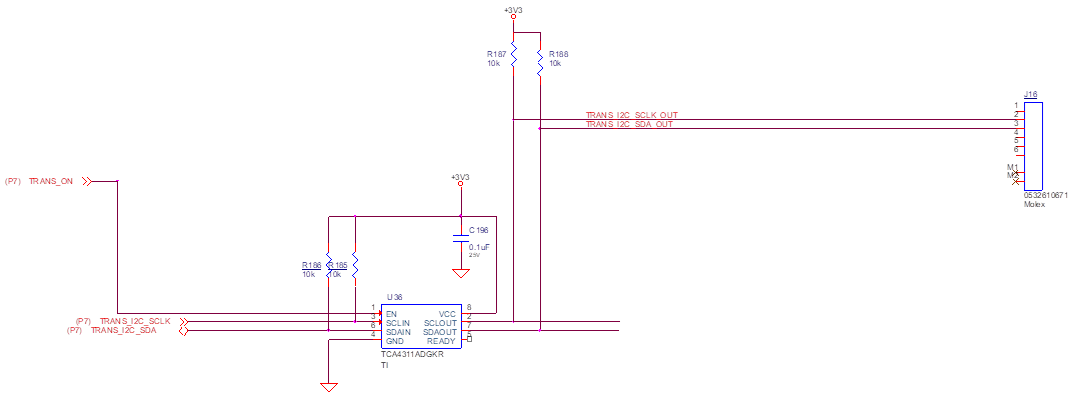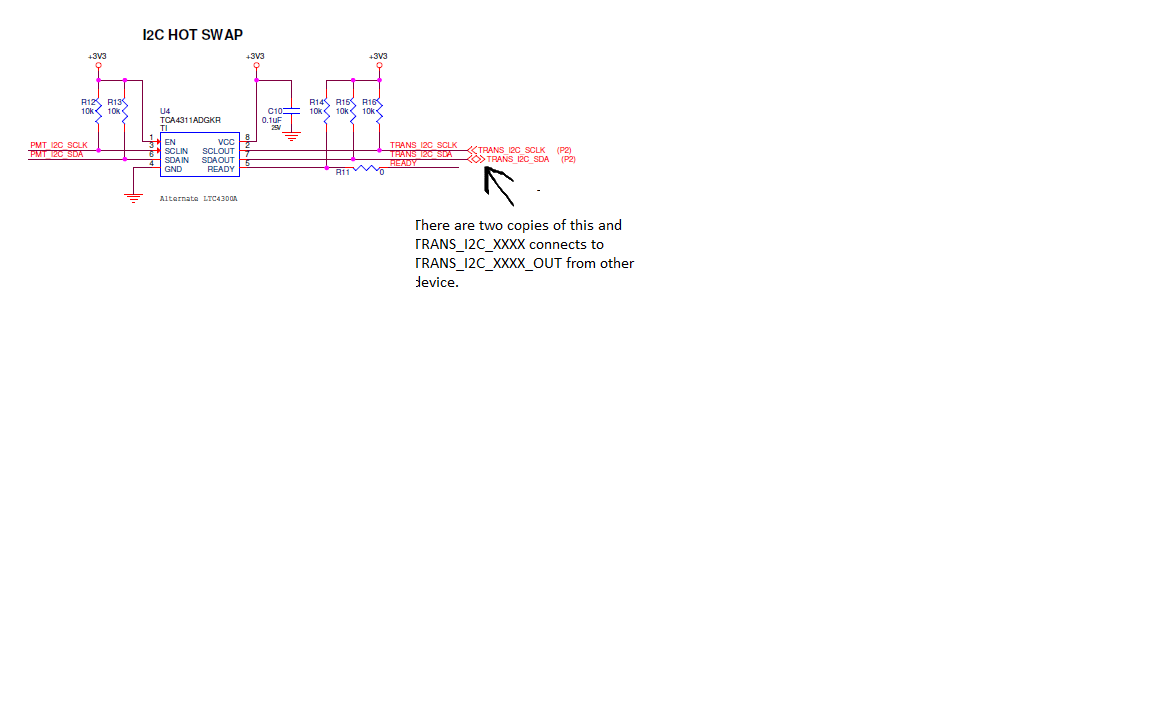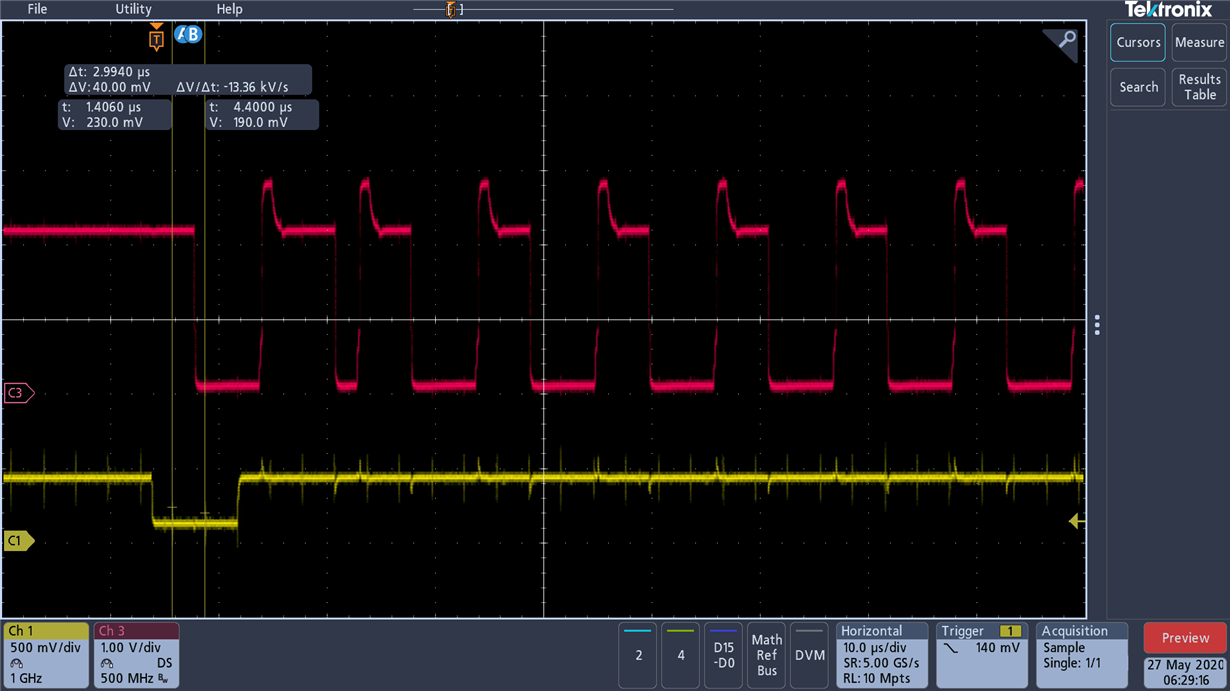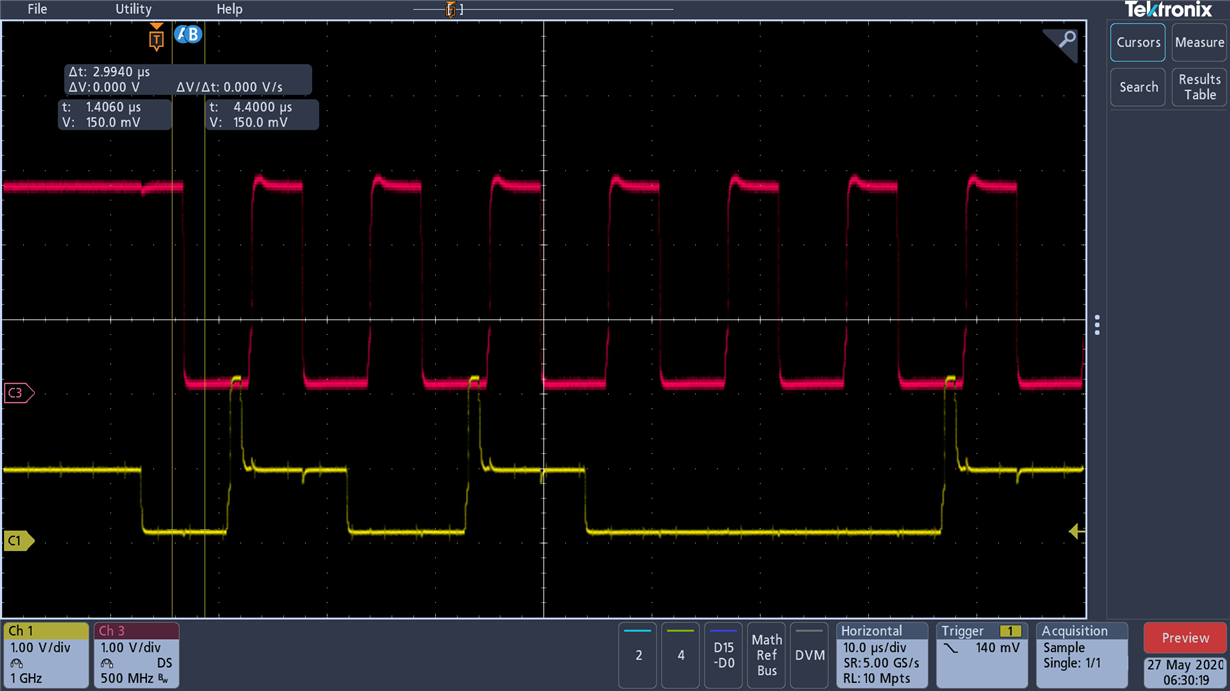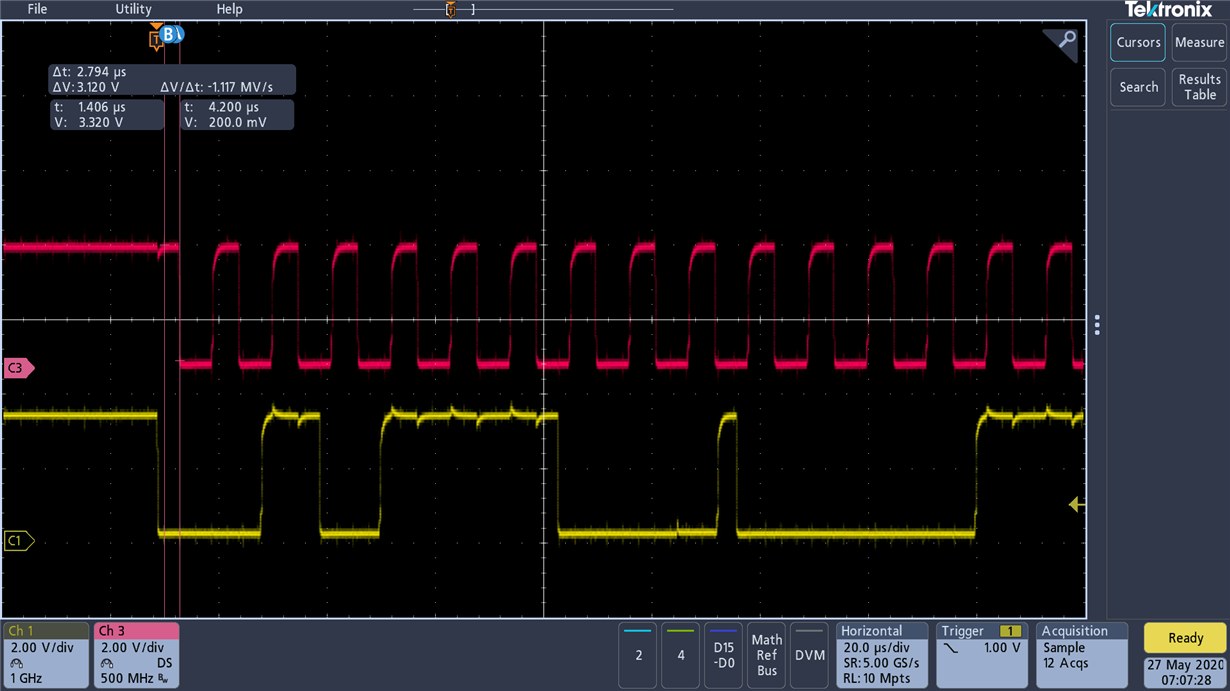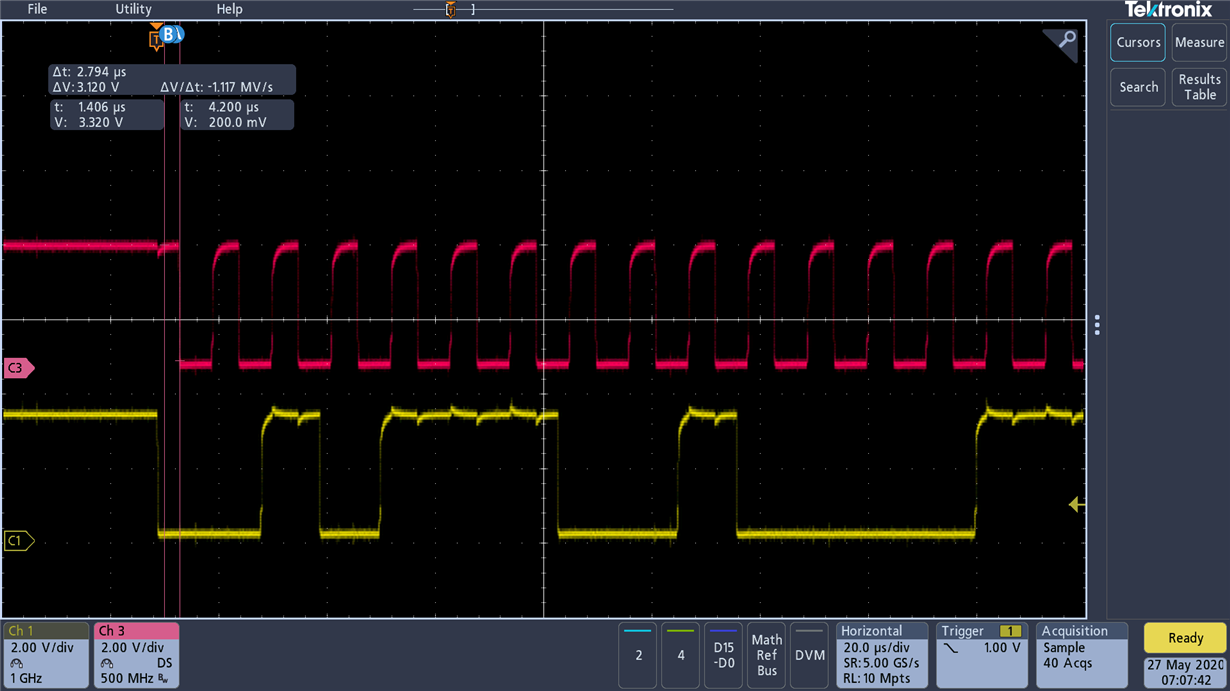Other Parts Discussed in Thread: TCA9511A
We have 3 TCA4311A devices connected. One is on the Master board and two are on a different board. All of the TCA4311A devices have the "OUT" pin connected. The "IN pins go to the I2C devices on the other boards. We have seen devices get damaged. Figure 14 shows an implementation which has the "OUT" pin connected for a long trace. Is it acceptable to have more than two connected this way? We are trying to figure out why these devices are getting damaged.


